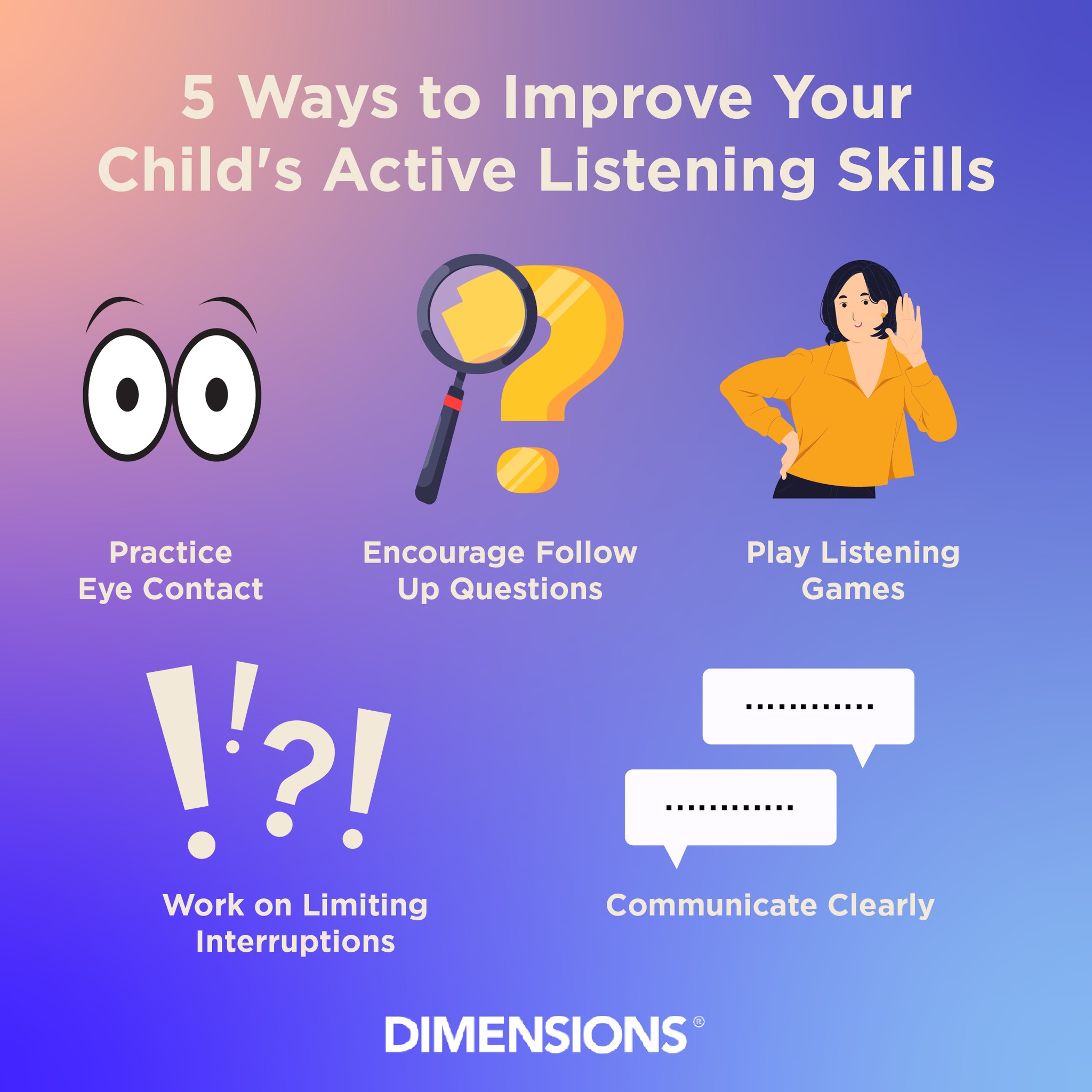Communication is a two-way street. It consists of both active listening and speaking effectively so that the other party understands what you want to communicate to them. Developing their active listening skills can greatly improve their ability to understand and follow instructions. As parents, we understand the importance of effective communication with our children, but how do we go about doing that?
Here are 5 ways you can help to improve your child’s active listening skills!
Practice Eye Contact
Maintaining eye contact is a powerful form of communication. It actively engages the person you are speaking to by commanding their attention while simultaneously letting them know you are listening to them. Get your kids to practise looking into your eyes for one to two minutes at a time before looking away. You can increase the duration of eye contact as you practise more. This will build up their confidence in holding conversations with people.
Encourage Follow Up Questions
Active listening is often paired with asking the right questions to continue the conversation. Listen out for key points when the other party is speaking so you will know what questions to follow up with next. For example, if someone is talking about the difficulties of raising a pet, you can follow up with a question about what methods they used to cope with said difficulties. Doing this will let the other party know that you are interested in what they are saying, and they will appreciate you for that.
Play Listening Games
One way to work on better listening is to play listening games. For example, listing out a whole bunch of items, then asking your child for specific details that you mentioned. This will train them to not only be attentive when someone else is talking, but also to be meticulous in mentally sorting out copious amounts of information.
Work On Limiting Interruptions
It is natural to want to butt in and interject with your own knowledge or experience in conversing with someone. However, you have to be able to pick up on the right time to speak, lest you interrupt someone mid-sentence. To combat this, limit your response to acknowledging head nods, or simply a sound to let the other party know that you were listening. For example, a simple “mhmm” or “ah” will suffice.
Communicate Clearly
As mentioned before, communication is a two-way street. You need to listen actively and also communicate effectively. Always think about what you want to say before speaking, so that you can get your point across in the most clear and succinct way possible.
